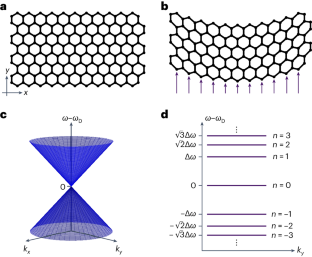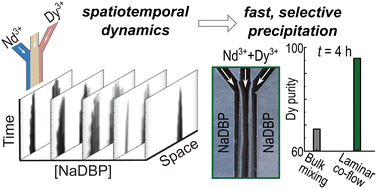2024-04-23 ペンシルベニア州立大学(PennState)
<関連情報>
- https://www.psu.edu/news/eberly-college-science/story/making-light-feel-magnetic-field-electron-would/
- https://www.nature.com/articles/s41566-024-01425-y
シリコンフォトニック結晶中のランダウ準位を直接観測 Direct observation of Landau levels in silicon photonic crystals
Maria Barsukova,Fabien Grisé,Zeyu Zhang,Sachin Vaidya,Jonathan Guglielmon,Michael I. Weinstein,Li He,Bo Zhen,Randall McEntaffer & Mikael C. Rechtsman

Abstract
When electrons are confined to a two-dimensional plane and are subjected to an out-of-plane magnetic field, they move in circular cyclotron orbits as a result of the Lorentz force. In the quantum domain, this cyclotron motion is quantized, and as a consequence, the energy spectrum of the electrons splits into discrete, highly degenerate states called Landau levels. These flat bands are the origin of the integer and fractional quantum Hall effects1,2. Although photons do not experience the Lorentz force because they do not carry charge, they can be made to experience ‘pseudomagnetic fields’3,4 as a result of periodicity-breaking strain. In this work, we experimentally observe photonic Landau levels that arise due to a strain-induced pseudomagnetic field in a silicon photonic crystal slab. The Landau levels are dispersive (that is, they are not flat bands) due to the distortion of the unit cell by the strain. We employ an additional strain of a different form that induces a pseudoelectric potential to flatten them. By acting akin to cavities that are delocalized across space, flat bands such as these have the potential to strongly enhance light–matter interaction as a result of the photonic structure. The analytical framework that we develop here for understanding the effects of inhomogeneous strain in photonic crystals via gauge fields can help to guide the design of multiscale non-periodic photonic structures.



